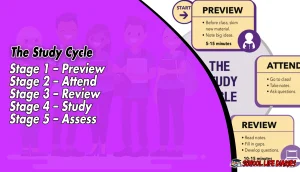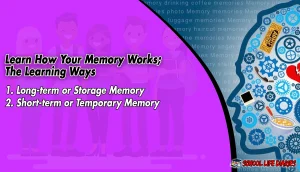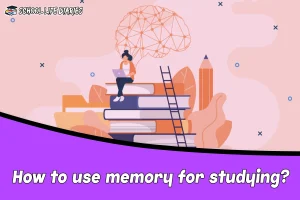In the pursuit of academic success, students are constantly searching for effective study strategies that can help them excel in their studies. While there is no shortage of study tips and techniques available, some remain relatively unknown or underutilized. These 3 secret study tips revolve around the power of peer teaching and group discussions. Another secret study tip focuses on the effectiveness of visual learning aids such as diagrams and flowcharts. Incorporating visual aids during studying not only stimulates engagement but also taps into the brain’s natural inclination toward processing information visually.
What are the Benefits of Engaging in Peer Teaching and Group Discussions as Part of Your Study Strategy?
When students participate in peer teaching or group discussions, they become actively involved in the learning process rather than passively receiving information. This active engagement allows them to gain a deeper understanding of the subject matter as they explain concepts to their peers or engage in discussions that challenge their own understanding. One of the benefits of peer teaching is that it encourages students to consolidate their knowledge.
When students teach a concept to others, they need to organize their thoughts and present the information in a clear and coherent manner. Group discussions offer another advantage by fostering critical thinking skills. Through collaborative study sessions, students are exposed to different perspectives and ideas from their peers. Engaging in peer teaching and group discussions as part of one’s study strategy offers numerous benefits for active learning, knowledge consolidation, and critical thinking skill development.
How do Visual Learning Aids Like Diagrams and Flowcharts Improve Information Retention, and How Can You Create Effective Visual Study Materials?
These aids provide learners with a visual representation of information, allowing them to grasp intricate relationships and patterns more effectively. By presenting information in a visually appealing format, visual learning aids stimulate engagement and promote active learning.
One of the key benefits of using visual learning aids is their ability to improve information retention. Visuals help learners encode and store information in their long-term memory by creating mental connections between different pieces of knowledge. When learners are presented with complex concepts or processes, diagrams and flowcharts break down the information into manageable chunks, making it easier to understand and remember. The use of colors, symbols, and shapes in these visuals also helps learners associate specific elements with certain ideas or concepts.
Best 3 Secret Study Tips To Become Topper
When it comes to becoming a topper, there are three secret study tips that can significantly contribute to success. The first tip is peer teaching benefits. Research has shown that explaining concepts to others helps solidify one’s own understanding of the material. The second secret study tip is utilizing visual study materials. Visual aids such as diagrams and flowcharts have been proven to improve information retention significantly. These visual representations help learners organize and connect ideas, making complex topics more digestible.
Implementing these three secret study tips – peer teaching benefits, visual study materials, and memory techniques – can significantly boost academic performance and help individuals become top performers in their respective fields of study. By actively engaging with peers through teaching others, utilizing visually appealing materials for studying purposes, and employing effective memory techniques for better retention of information, students can enhance their learning experience while achieving top grades at the same time.
Why do you need secret study tips?
To excel academically and achieve top grades, it is crucial to employ effective learning strategies that have been proven to enhance performance and maximize knowledge retention. Utilizing secret study tips can provide students with the necessary tools to improve their studying techniques and ultimately succeed in their academic pursuits.
One of the reasons why secret study tips are necessary is because they encourage peer teaching. By explaining concepts to others, students reinforce their own understanding of the material. Peer teaching allows individuals to gain a deeper comprehension of subjects by breaking down complex ideas into simpler terms that can be easily understood by their peers. This not only enhances their own learning but also contributes to the overall growth and development of the entire group.
Another reason why secret study tips are invaluable is due to the utilization of visual aids. Visual aids, such as diagrams, charts, or graphs, help students visualize information and connect different ideas together. When studying complex topics like science or history, visual aids can simplify abstract concepts and make them more accessible. They provide a visual representation that facilitates memory retention by engaging both visual and spatial cognitive processes.
What Are Study Tips?
Study tips are essential tools that can greatly enhance the learning process and help students achieve their goals. These tips encompass a wide range of techniques, such as active learning, effective note-taking techniques, and time management skills. By incorporating these study tips into their routine, students can experience numerous benefits that contribute to their overall academic success.
Active learning is a key component of effective studying. This approach encourages students to actively engage with the material rather than passively absorbing information. It involves participating in discussions, asking questions, and seeking clarification. By actively engaging with the content, students are more likely to understand and retain information. Additionally, active learning promotes critical thinking skills and helps develop a deeper understanding of the subject matter.
Study tips play an integral role in optimizing learning outcomes for students by promoting active engagement with the material through methods like active learning and efficient note-taking techniques. Implementing these study tips not only enhances performance but also fosters a sense of freedom by providing individuals with tools they can utilize to take control of their own learning journey.
The Study Cycle
The study cycle is a systematic approach to studying that involves five stages:
– Preview: Students familiarize themselves with the material by quickly glancing through it before diving into a more detailed study session.
– Attend: Requires active engagement during lectures or reading sessions to fully understand and absorb the information.
– Review: Involves going over the material again to reinforce understanding and identify any gaps in knowledge.
– Study: Students spend focused time actively learning and practicing the concepts.
– Assess: Allows students to evaluate their understanding through quizzes or tests to gauge their progress and identify areas that need further improvement.
Stage 1 – Preview
Previewing the material at Stage 1 of studying allows for a comprehensive overview of the content without relying on personal preferences or biases. This initial step in the study cycle is crucial as it sets the foundation for effective learning. Previewing also allows students to explore various memory techniques that may aid in their learning process. Memory techniques such as mnemonics or creating associations can make it easier to remember complex information. By reviewing the material beforehand, students can identify potential areas where these memory techniques could be applied, making it easier to recall information during later stages of studying.
Previewing also enables students to utilize visual aids effectively and explore memory techniques that enhance comprehension and retention. By incorporating this stage into their study routine, students can lay a solid foundation for effective learning and maximize their chances of academic success.
Stage 2 – Attend
This stage involves actively engaging with the material through various methods such as peer teaching, group discussions, and visual learning aids. Peer teaching can be a powerful tool for deepening understanding and retention of information. By explaining concepts to others in your own words, you not only reinforce your own knowledge but also gain new perspectives from your peers. It allows for a collaborative learning environment where everyone involved can benefit from each other’s insights and explanations.
Visual learning aids are effective tools for enhancing comprehension and memory retention. Visuals such as diagrams, charts, or illustrations can help simplify complex information and make it easier to grasp. They provide a visual representation that appeals to our cognitive processes, aiding in the encoding and retrieval of information.
Stage 3 – Review
Review strategies are essential for consolidating knowledge and ensuring retention. Effective note-taking is one such strategy that aids in the review process. By actively summarizing key points, organizing information, and highlighting important details during lectures or while reading textbooks, students can create a valuable resource to refer back to during review sessions.
This method prompts learners to retrieve information from memory rather than passively re-reading notes or textbooks. Research suggests that this form of self-testing not only enhances long-term retention but also improves problem-solving skills and critical thinking abilities. Incorporating these review strategies, alongside effective note-taking and active recall techniques, can lead to a deeper understanding of the subject matter. By engaging in regular review sessions throughout the learning process, students can reinforce their comprehension and increase their chances of retaining information in the long term.
Stage 4 – Study
it allows for a deeper understanding and retention of the subject matter. In this stage, students have already reviewed the material in Stage 3 and are now ready to dive into more active studying techniques. One effective strategy is peer teaching, where students take turns explaining concepts to each other. This not only helps solidify their own understanding but also challenges them to articulate ideas clearly and concisely. By teaching others, students are forced to think critically about the material and consider different perspectives, which enhances their overall comprehension.
Visual aids can also be highly beneficial during Stage 4 of studying. Incorporating pictures, diagrams, or graphs can help students visualize complex concepts and improve memory recall. Visual representations stimulate different parts of the brain compared to reading or listening alone, making it easier for information to be encoded and retained. Additionally, visual aids can break down complicated topics into simpler components, making them more manageable and easier to understand.
Stage 5 – Assess
This stage involves self-evaluation and study reflection, allowing us to gauge how effectively we have absorbed and understood the information. Assessing our progress is an essential step in identifying areas of strength and weakness, enabling us to tailor our future study efforts accordingly. During this stage, one effective way to assess progress is through self-evaluation. Self-evaluation helps us identify strengths, areas for improvement, and potentially overlooked aspects of the topic at hand.
It allows us to reflect on what we have learned so far and pinpoint specific areas where additional focus may be needed. Moreover, this process fosters a sense of ownership over our learning journey as we take responsibility for monitoring our own growth. Transitioning from actively studying to assessing progress is a vital step in maximizing learning potential. Through self-evaluation and study reflection, individuals can gain a deeper understanding of their strengths and weaknesses while refining their approach toward future studies.
Learn How Your Memory Works; The Learning Ways
This discussion will focus on two key aspects of memory: long-term or storage memory, and short-term or temporary memory. Long-term memory refers to the ability to retain and recall information over an extended period of time, while short-term memory involves the temporary holding and processing of information.
(i) Long-term or Storage Memory
Long-term memory refers to the storage of information over an extended period, from days to years. It involves several processes such as information encoding and memory consolidation.
During encoding, incoming information is transformed into a meaningful form that can be stored in memory. This process relies on various strategies like repetition, association, and visualization to enhance the retention of information.
Long-term memory plays a vital role in academic success by allowing individuals to retain and retrieve knowledge effortlessly. Through processes such as information encoding and memory consolidation, new information is transformed into lasting memories that can be accessed over an extended period. Understanding these mechanisms can empower students with effective study techniques that maximize their chances of retaining information for future use.
(ii) Short-term or Temporary Memory
Short-term or temporary memory refers to the ability to hold a small amount of information in our minds for a short period of time. This type of memory is crucial for tasks such as remembering a phone number long enough to dial it or recalling an address while navigating unfamiliar streets. However, the capacity and duration of short-term memory are limited, making it susceptible to forgetting if not properly encoded into long-term memory.
To improve short-term memory retention, individuals can employ various memory techniques and strategies. One such technique is chunking, which involves grouping information into meaningful units or chunks. For example, instead of trying to remember a string of random numbers like 7465129387, one can chunk them into smaller groups such as 746-512-9387, making it easier for the mind to retain the information.
Memory improvement strategies can further aid in enhancing short-term memory capabilities. These strategies often involve creating associations or connections between new information and existing knowledge in order to facilitate encoding and retrieval processes. Mnemonic devices, such as acronyms or visual imagery techniques, provide cues that trigger recall by linking new material with pre-existing mental frameworks.
Moving information between two types of memory
Transferring information from short-term memory to long-term memory requires effective encoding strategies. When studying, it is crucial to use techniques that facilitate the movement of information between these two types of memory. One way to achieve this is by using active learning methods such as summarizing, paraphrasing, or teaching the material to someone else. By engaging with the content and actively processing it, learners can enhance their understanding and retention of the information.
Successfully transferring information from short-term memory to long-term memory involves employing effective encoding strategies, utilizing appropriate study materials, and implementing repetition techniques. By actively engaging with the material, choosing relevant resources, and repeating key concepts over time, learners can enhance their ability to retain and recall information more efficiently.
How to use memory for studying?
Applying effective memory strategies can significantly enhance the learning experience, as learners engage with the material through active processing and utilize relevant study resources. Memory techniques play a crucial role in improving the retention and recall of information. One such technique is effective note-taking, which involves synthesizing key concepts and ideas from lectures or readings. A conducive environment can help minimize distractions and promote focus during study sessions.
Employing memory techniques, such as effective note-taking, combined with creating an appropriate study environment can greatly enhance the learning experience. By actively engaging with the material through summarization and organization of key concepts, learners are more likely to retain and recall information effectively.
Learn how to overcome procrastination
This paragraph discusses the Pomodoro technique as a method to overcome procrastination in studying. The Pomodoro technique is a time management technique that involves breaking study sessions into intervals of focused work followed by short breaks. This technique can help individuals stay motivated, maintain concentration, and minimize distractions while studying.
Pomodoro Technique:
The Pomodoro technique, a popular time-management method, involves breaking study sessions into timed intervals to increase focus and productivity. This technique was developed by Francesco Cirillo in the late 1980s and has since gained popularity among students and professionals alike. The basic principle behind the Pomodoro technique is to work in short bursts of intense concentration, typically lasting for 25 minutes, followed by a short break of around five minutes.
Implementing the Pomodoro technique can be highly beneficial for individuals seeking effective time management strategies and increased productivity. This technique also promotes discipline as it encourages individuals to adhere strictly to the allocated study periods and resist distractions during those intervals.
Learn how to make new habits:
Incorporating effective strategies for habit formation is crucial in the pursuit of mastering new skills. When it comes to learning how to develop new habits, consistency is key. Consistency allows individuals to establish effective study routines and ensure that they are engaging in regular practice. By consistently allocating time and effort towards studying, individuals can create a habit that becomes ingrained in their daily lives.
Developing a new habit requires commitment and discipline. It is important to set specific goals and create a structured routine that facilitates the learning process. For example, setting aside a specific time each day dedicated solely to studying can help individuals stay focused and motivated. Additionally, breaking down larger tasks into smaller, manageable chunks can make the learning process more attainable.
Effective study routines not only enhance knowledge retention but also promote better time management skills. By establishing a consistent schedule for studying, individuals can optimize their productivity levels and allocate sufficient time for other activities as well. This ensures a healthy balance between academics and personal life.
How to ignore old habits?
This discussion will focus on the third key point: how to study effectively at home and prepare for tests. Effective studying at home requires creating a conducive environment, setting specific goals, and utilizing effective study techniques.
How to study effectively at home and prepare for tests
To optimize studying and achieve success on exams, it is crucial to adopt effective strategies at home that promote thorough preparation and invigorate a sense of determination. One strategy that has been proven effective is peer teaching. By explaining concepts and ideas to others, students are forced to organize their thoughts in a coherent manner, reinforcing their own understanding of the material.
Another useful technique for studying effectively at home is the use of visual aids. Visual representations such as diagrams, charts, and graphs can help students visualize complex information and make it easier to remember. These visual aids provide a more concrete representation of abstract concepts, enhancing understanding and aiding in recall during exams.
Adopting effective strategies for studying at home is essential for thorough preparation and success on exams. Peer teaching facilitates better understanding through explanation and discussion with classmates while visual aids provide tangible representations of abstract concepts for improved retention. Additionally, employing memory techniques such as mnemonics or visualization enhances recall abilities during test-taking situations.
Bonus Tips to Study Smarter and Not Harder
When it comes to studying smarter rather than harder, visual learning techniques prove to be highly effective. By incorporating visual aids such as diagrams, charts, and mind maps into the study routine, students can improve their understanding and retention of information. Visual materials not only engage the learner’s visual senses but also help in organizing complex concepts into more digestible formats. This method is particularly useful for subjects that involve a lot of data or require a strong grasp of spatial relationships.
Another aspect to consider when aiming for effective studying is utilizing quality study materials. It is essential to choose resources that align with the curriculum or syllabus being followed. Accessing textbooks, lecture notes, online educational platforms, or reputable scholarly articles can provide comprehensive and accurate information necessary for thorough understanding. By using reliable sources, students can avoid wasting time on irrelevant or outdated content and focus their efforts on areas that truly matter.
Key Benefits of Practice Tests
One significant benefit of practice tests is that they allow individuals to gauge their understanding of a particular subject or topic. By engaging in these simulated exams, students can identify areas where they excel and areas that require further attention. This self-assessment enables them to focus their efforts on specific concepts or skills that need improvement, leading to more targeted and effective studying.
Utilizing these visual learning aids during practice tests allows students to consolidate their understanding through different sensory channels, making it easier for them to retrieve information during actual exams. Techniques such as mnemonics (e.g., acronyms or rhymes), chunking (organizing information into manageable groups), or spaced repetition (revisiting material at intervals) can aid in retaining information over time. These techniques provide learners with practical tools for encoding, storing, and retrieving information more efficiently, ultimately leading to improved academic performance.
Last Words From The 3 Secret Study Tips
Lastly, it is essential to consider the final insights provided by these three strategies, as they offer valuable guidance for maximizing learning potential. One of the key benefits mentioned is peer teaching. This technique involves explaining concepts and ideas to classmates or study partners. By doing so, students not only reinforce their own understanding but also gain a deeper insight into the subject matter. Peer teaching fosters active engagement and encourages critical thinking, making it an effective method for knowledge retention.
Visuals such as diagrams, charts, and graphs can greatly enhance comprehension and memory recall. They help learners organize information in a more structured manner and provide a visual representation of complex concepts. This approach appeals to individuals who have a preference for visual learning styles and aids in creating mental connections between different pieces of information.
These secret study tips shed light on some powerful strategies that can boost academic performance and maximize learning potential. Peer teaching benefits not only the learner but also those who teach others as it reinforces understanding through active engagement with the material. Visual learning aids provide a structured approach to organizing information and cater to visual learners’ preferences. Lastly, memory techniques aid in retaining knowledge through association and visualization methods.
Conclusion: 3 Secret Study Tips
In conclusion, incorporating peer teaching and group discussions into your study strategy can have numerous benefits. Not only does it allow for a deeper understanding of the material through explaining concepts to others, but it also promotes active engagement and collaboration. Overall, these secret study tips can help students become more successful in their academic pursuits. By implementing these strategies, individuals can improve their understanding of the material, retain information more effectively, and ultimately achieve better results in their studies.
It is important to remember that studying smarter rather than harder is key to achieving success in academics. Therefore, incorporating these tips into your study routine can make a significant difference in your learning experience.














